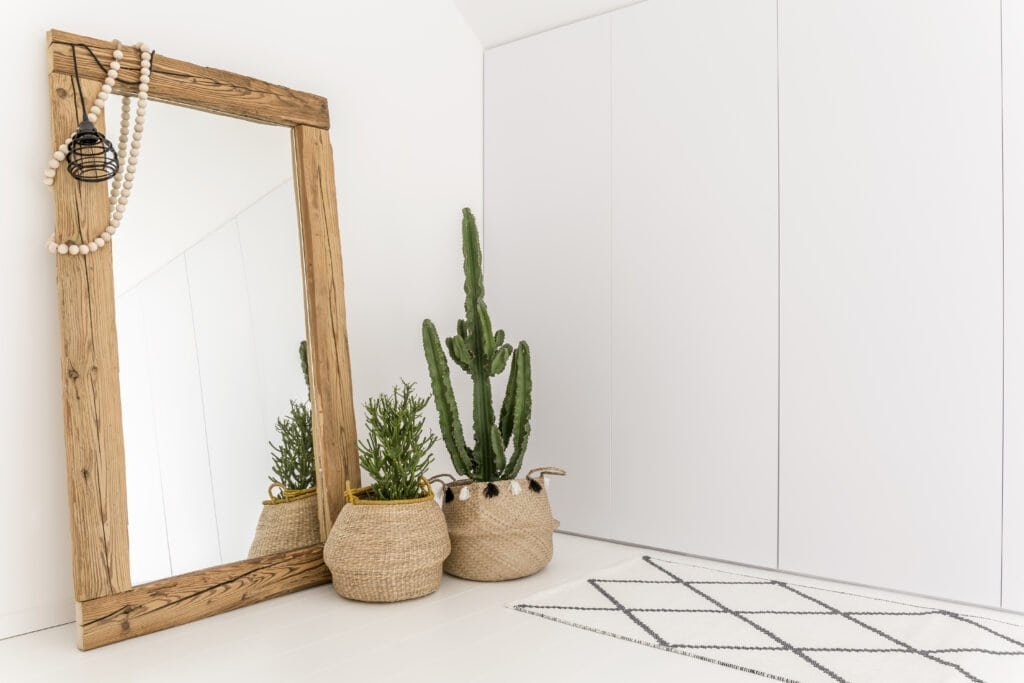Eco-Friendly Picture Framing: Using Reclaimed Materials for Sustainable Photo Displays
Want to add character to your home while helping the planet? Eco-friendly picture framing offers the perfect solution. By using materials like bamboo, reclaimed wood, and recycled glass, you’ll create unique frames with personality while reducing waste.
Creating frames from reclaimed materials gives you one-of-a-kind photo displays while promoting sustainability. These environmentally conscious options can include backing boards made from 100-percent wood pulp and feature recycled glass. Whether you prefer rustic or modern, there’s an eco-friendly style for every home.

The beauty of sustainable framing goes beyond helping the environment. Frames made from responsibly sourced materials like bamboo and reclaimed wood add distinctive character impossible to find in mass-produced options. Each frame tells its own story, creating a conversation piece that showcases both your memories and values.
Why Choose Eco-Friendly Framing?
Traditional framing relies heavily on newly harvested wood, contributing to deforestation and habitat loss. Many conventional frames use chemical-heavy finishes that release harmful compounds into your home.
Standard framing often includes non-recyclable backing boards and glass that requires significant energy to produce. Conventional adhesives frequently contain chemicals that affect indoor air quality.
By contrast, reclaimed materials offer unique character while reducing demand for new resources. Recycled glass minimizes waste, and reclaimed wood often features distinctive patinas and weathering that tell a story.
Cotton-based materials provide chemical-free, renewable options that are both biodegradable and recyclable. Choosing sustainable methods also supports local artisans focused on environmental responsibility.
Finding Quality Reclaimed Materials

Finding great materials requires knowing what to look for. Old barns, fences, and demolished buildings often yield excellent wood with authentic character that can’t be replicated. Weathered barn wood creates rustic frames with genuine charm.
When evaluating wood, check for:
- Hardness (minimal indentation when pressed with fingernail)
- Low moisture content to prevent warping
- Absence of pest damage
- No toxic chemical treatments
Cedar works particularly well for its natural resistance to decay and insects, making it perfect for rustic natural frames. Look for pieces with interesting grain patterns, nail holes, or paint remnants.
Metal elements from old machinery, industrial scraps, and architectural salvage provide unique framing materials. Hardware stores often discard metal trim pieces perfect for repurposing.
Local resources abound if you know where to look:
- Architectural salvage yards and demolition sites
- Construction dumpsters (with permission)
- Habitat for Humanity ReStores
- Online communities like Freecycle and Facebook Marketplace
- Estate sales and yard sales in older neighborhoods
Designing with Reclaimed Materials
Creating beautiful frames requires balancing aesthetics with structural integrity. The right design choices ensure your frames protect precious photos while showcasing the unique character of repurposed materials.
When designing, embrace imperfections—they add character and uniqueness. Reclaimed wood offers natural weathering, knots, and color variations that create visual interest.
Consider:
- Texture contrast: Pair smooth photographs with rough-textured frames
- Color harmony: Choose materials that complement colors in your photos
- Width proportions: Larger photos typically need wider frames for balance
For durability, test materials for stability before building. Apply non-toxic sealants to prevent warping, and use metal brackets for larger frames to prevent separation. Create a buffer between photos and reclaimed materials with acid-free mats to prevent deterioration.
Eco-friendly matboards protect photos from direct contact with reclaimed elements, while UV-protective glass shields photos from light damage.
Making Your Own Frame
Creating picture frames from reclaimed materials is rewarding and environmentally responsible. You’ll need basic tools like:
- Measuring tape
- Saw (hand saw or miter saw)
- Sandpaper (medium and fine grit)
- Hammer or nail gun
- Wood glue
- Clamps
- Screwdriver
- Drill with bits
Follow these steps:
- Measure and plan frame dimensions, adding about 1/8 inch clearance around your photo
- Cut material at 45-degree angles using a miter saw or miter box
- Sand all edges thoroughly to prevent splinters
- Assemble the frame with wood glue and clamps
- Reinforce corners with small nails or brackets
- Create a rabbet (groove) along the inside edge to hold glass, photo, and backing
For finishing, thoroughly clean your assembled frame first. Consider natural finishes like beeswax or linseed oil that highlight the material’s inherent texture and grain while remaining eco-friendly.
For more decorative approaches, try distressing (creating an aged appearance), decoupage (attaching decorative paper), or adding fabric coverings for unique texture. Finally, install proper hanging hardware—D-rings with picture wire provide the most secure method.
Adding Personal Touches

Personalization creates truly distinctive displays. Recycled materials like magazine pages can be woven together to form colorful borders that complement your photos and décor.
Try these techniques:
- Attach small mementos, buttons, or fabric scraps to wooden frames
- Use low-VOC paints to add colors matching your décor
- Press small natural elements like dried flowers or sea glass into handmade frames
Reclaimed materials offer innovative display methods beyond traditional hanging. Industrial elements like pipe fittings create striking mounting systems that complement repurposed wood frames.
Creative display ideas include:
- Hanging wire grids with wood clips for an industrial look
- Old window frames repurposed as multi-photo displays
- Dismantled pallet wood collages for rustic, textured backdrops
Bamboo and sustainable woods work well for creating floating displays in minimalist spaces where photos become focal points without heavy framing.
Maintaining Your Frames
Proper care ensures your eco-friendly frames stay beautiful for years. Dust regularly with a soft microfiber cloth to prevent buildup that can damage natural finishes. Avoid chemical cleaners that harm both the environment and your frame materials.
For bamboo or reclaimed wood, use a slightly damp cloth when necessary, then immediately dry. Sustainable frames often have natural finishes sensitive to moisture.
Clean recycled glass with a 1:1 mixture of water and white vinegar rather than commercial glass cleaners. Apply to a cloth first, not directly to the frame.
For long-term preservation:
- Position frames away from direct sunlight to prevent fading
- Control humidity levels (aim for 40-50% relative humidity)
- Apply natural beeswax polish annually to wooden frames
- Handle frames with clean hands and avoid high-traffic areas
Showcasing Your Creations
Wall arrangements with recycled material frames create unique focal points. Consider a gallery wall mixing eco-friendly frames with other sustainable decorations.
Position frames where natural light highlights texture and character without damaging photos. Pair with complementary elements like indoor plants, other repurposed items, or natural textiles for a cohesive look.
Share the story behind your handcrafted eco-frames to educate others about sustainability. Post photos on social media highlighting unique features and material origins to inspire wider audiences.
Consider hosting workshops to demonstrate upcycling techniques. Gift-giving presents another avenue for spreading eco-conscious values—recipients appreciate both the handmade quality and environmental consideration of frames made with reclaimed or sustainable materials.
By creating picture frames from reclaimed materials, you’re not just decorating your home—you’re making a statement about sustainability and craftsmanship that resonates with everyone who sees your unique creations.








